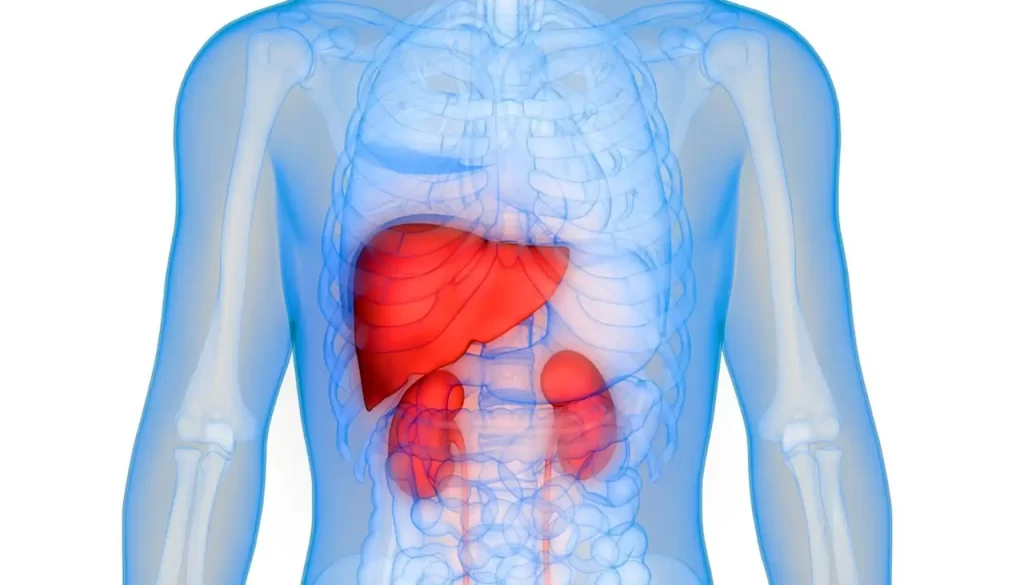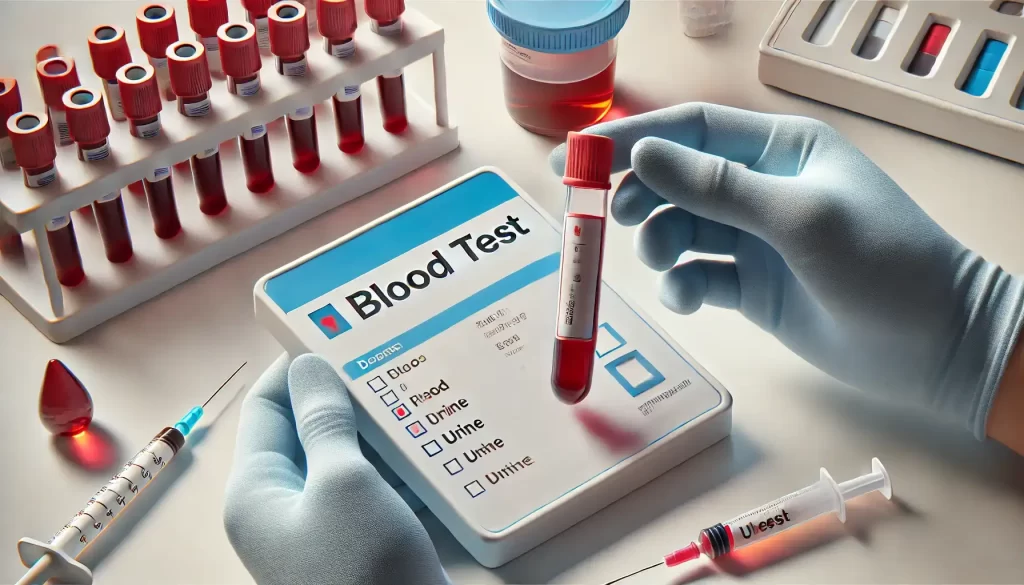Methamphetamine, often referred to as meth, is a highly addictive stimulant with significant effects on the body and mind. Understanding how long does meth stay in your system is essential, whether you’re preparing for a drug test, concerned about its health impacts, or seeking recovery.
The length of time meth remains detectable depends on several factors, including the type of drug test, how often it is used, and individual health factors. While meth’s effects may wear off in hours, its traces can linger in your system for days—or even months in certain cases. Knowing these detection windows can provide clarity and help you take the right steps moving forward.
In this article, we’ll explore:
- How meth is processed and eliminated from the body.
- How long meth stays in your system depending on the testing method.
- Key factors that influence meth detection times.
This comprehensive guide will give you the insights you need to better understand meth detection and its effects on your body.
Understanding How Meth Is Processed by the Body
Methamphetamine, or meth, affects the body by rapidly entering the bloodstream and delivering a powerful stimulant effect. The way meth is processed and eliminated involves several complex biological mechanisms, primarily through the liver and kidneys. Here’s a closer look at how meth moves through the body and what happens during its breakdown.
How Meth Enters and Exits the Body
When meth is consumed, whether by smoking, snorting, injecting, or ingesting, it is quickly absorbed into the bloodstream. Once in the blood, it crosses the blood-brain barrier efficiently, producing an intense and immediate effect by stimulating the release of dopamine, the “feel-good” chemical in the brain.
- Entry: Meth enters the body almost immediately when smoked or injected, reaching peak concentrations in minutes. When taken orally, the effects appear more slowly, usually within 15-30 minutes.
- Exit: Meth begins to leave the body as it is metabolized in the liver and excreted in the urine. However, traces can linger for days, depending on factors like dosage and frequency of use.
Role of the Liver and Kidneys in Breaking Down Meth
The liver plays a critical role in processing meth by metabolizing it into other compounds, primarily amphetamine and 4-hydroxymethamphetamine. These metabolites are then further broken down or excreted through the kidneys.
- Liver: Converts meth into its metabolites, some of which have similar stimulant effects, prolonging the drug’s impact on the body.
- Kidneys: Filter meth and its byproducts out of the bloodstream, expelling them through urine.
Approximately 30-50% of meth leaves the body unchanged, which means the drug itself is excreted directly without complete metabolism.

Overview of Meth Metabolites
Methamphetamine’s breakdown produces several metabolites that are used in drug testing to confirm meth use. These include:
- Amphetamine: A byproduct that retains stimulant properties, contributing to meth’s prolonged effects.
- 4-Hydroxymethamphetamine: Another breakdown product that indicates meth use in lab tests.
- Unchanged Methamphetamine: Meth that remains unaltered and is excreted directly in urine.
The presence of these metabolites can vary based on the individual’s metabolism, the amount of meth consumed, and the method of administration.
Key Takeaway
Meth is rapidly absorbed, metabolized by the liver, and excreted through the kidneys, but traces of the drug and its metabolites can linger in the body for days. Understanding this process is crucial for interpreting drug test results and recognizing the prolonged effects meth can have on the body. This breakdown underscores the importance of considering individual factors when determining how long meth stays in your system.
Detection Windows for Meth: How Long It Stays in Your System
The amount of time methamphetamine remains detectable in your system depends on the testing method used. Each method has a different detection window, ranging from a few hours to several months. Understanding these timeframes is crucial for interpreting drug test results and planning for specific scenarios.
Urine Tests
Urine tests are the most commonly used method for detecting meth due to their reliability, affordability, and relatively broad detection window.
- Detection Time: Meth is typically detectable in urine for 1-4 days after use. For heavy or chronic users, traces of meth may linger longer, sometimes up to a week.
- Why Urine Tests Are Popular:
- Urine tests are non-invasive and easy to administer.
- They are highly effective at identifying recent meth use due to the concentration of meth and its metabolites in urine.
Pro Tip: Hydration levels and metabolism can influence how long meth remains detectable in urine.

Blood Tests
Blood tests are less commonly used than urine tests but are highly accurate for detecting meth during its active phase in the body.
- Detection Time: Meth can be found in the bloodstream for 1-3 days after use. The exact time depends on the dosage, frequency of use, and individual metabolism.
- When Blood Tests Are Used:
- In emergency medical situations to confirm meth intoxication.
- In legal cases, such as driving under the influence (DUI) investigations.
Note: Blood tests provide a shorter detection window because meth leaves the bloodstream faster than it exits the urine or other bodily fluids.
Saliva Tests
Saliva tests are gaining popularity due to their simplicity and ability to detect recent drug use.
- Detection Time: Meth is detectable in saliva for 1-2 days after use.
- Ease of Use:
- Non-invasive and can be conducted on-site, making them ideal for workplace drug tests or roadside law enforcement checks.
- Saliva tests are particularly effective for identifying very recent meth use.
Limitations: Because of their short detection window, saliva tests are not suitable for identifying past meth use.
Hair Tests
Hair testing has the longest detection window of all drug testing methods, making it useful for uncovering long-term drug use patterns.
- Detection Time: Meth can be detected in hair for up to 90 days after use. In some cases, it may be traceable even longer, depending on hair growth rates.
- Why Hair Testing Is Used:
- Ideal for long-term detection and monitoring in legal or forensic settings.
- Provides a comprehensive history of meth use rather than focusing on recent activity.
Drawback: Hair tests are more expensive and invasive than urine or saliva tests, and results may take longer to process.
Key Takeaway
The detection window for methamphetamine varies significantly depending on the test used:
- Urine tests are most common, detecting meth for 1-4 days.
- Blood tests work within a shorter 1-3 day window, ideal for emergencies.
- Saliva tests detect meth for 1-2 days and are useful for recent use.
- Hair tests provide the longest detection window, up to 90 days, offering insights into long-term drug habits.
Knowing which test is being used and its limitations can help you better understand how long meth stays in your system and how to interpret the results.
Factors That Affect How Long Meth Stays in Your System
The length of time meth remains detectable in your body isn’t the same for everyone. Several factors influence how quickly meth is metabolized and eliminated. Understanding these factors can provide a clearer picture of why detection times vary between individuals.
Frequency of Use: Occasional vs. Chronic Meth Use
- Occasional Users: Those who use meth sporadically are likely to eliminate the drug faster than chronic users. Meth and its metabolites don’t build up as much in their systems.
- Chronic Users: Frequent or heavy use leads to meth accumulation in body tissues, resulting in longer detection times. Chronic use can also slow down the body’s ability to metabolize and clear the drug.
Metabolism: How Individual Metabolic Rates Influence Detection Times
- People with faster metabolic rates tend to process and eliminate meth more quickly.
- Factors like age, activity level, and genetics play a role in determining metabolism speed.
- Slow metabolisms, often associated with older age or sedentary lifestyles, can prolong meth retention in the system.
Dosage: Higher Doses Result in Longer Detection Times
- Larger doses of meth take longer for the body to break down and excrete.
- High doses may also produce more metabolites, which extend the detection window.
Body Fat and Hydration: How These Factors Impact Meth Retention
- Meth is water-soluble, meaning hydration can influence how quickly it is expelled. Staying hydrated may slightly reduce retention times.
- Individuals with higher body fat percentages may retain meth longer, as the drug can sometimes bind to fat cells, slowing its release from the body.
General Health: Role of Liver and Kidney Health in Drug Elimination
- Liver Health: The liver is responsible for breaking down meth into its metabolites. Liver conditions like hepatitis or cirrhosis can slow this process, prolonging detection times.
- Kidney Health: The kidneys filter meth and its metabolites out of the bloodstream. Impaired kidney function can result in slower excretion and longer retention of meth in the body.
Key Takeaway
How long meth stays in your system is influenced by individual factors like frequency of use, metabolism, dosage, body fat, and organ health. These variables mean that detection windows can vary widely, even when the same testing method is used. Understanding these factors provides greater clarity on why meth detection is not a one-size-fits-all scenario.
Health Implications of Meth Use
Methamphetamine, or meth, is a potent and highly addictive drug that has severe consequences for both short-term and long-term health. Its use impacts nearly every part of the body, from the brain and heart to vital organs, and repeated use significantly increases the risk of life-altering complications. Understanding these health implications underscores the importance of seeking help for meth addiction.
Short-Term Effects of Meth on the Body
The immediate effects of meth can be intense and dangerous, even for first-time users. These effects are caused by the drug’s ability to flood the brain with dopamine, which disrupts normal function and puts immense strain on the body.
- Increased Heart Rate and Blood Pressure: Meth stimulates the cardiovascular system, leading to rapid heartbeat and elevated blood pressure, which can trigger heart attacks or strokes.
- Hyperactivity and Insomnia: Users may experience a burst of energy and sleeplessness, often leading to physical and mental exhaustion.
- Dehydration and Overheating: Meth use can disrupt the body’s ability to regulate temperature, increasing the risk of heatstroke and dehydration.
- Erratic Behavior: Anxiety, aggression, and paranoia are common short-term psychological effects.
Long-Term Effects of Meth Use on the Body
Repeated meth use has devastating long-term consequences that worsen with prolonged addiction.
- Brain Damage: Meth causes changes in the brain that affect memory, judgment, and emotion. Long-term use can lead to permanent cognitive impairment and increase the risk of mental health conditions like depression and psychosis.
- Heart Damage: Chronic meth use weakens the heart, leading to conditions like cardiomyopathy (heart muscle disease) and arrhythmias.
- Organ Failure: Meth places stress on the liver and kidneys, often resulting in damage or failure over time.
- Severe Tooth Decay: Known as “meth mouth,” this condition results in severe dental problems due to dry mouth, poor oral hygiene, and a craving for sugary foods.
Pro Tip: The damage caused by meth is often irreversible, making early intervention critical.
Risks of Repeated Meth Use
- Addiction: Methamphetamine is one of the most addictive substances, often leading to dependency after just a few uses.
- Increased Risk of Overdose: Tolerance builds quickly, requiring higher doses for the same effect, increasing the likelihood of overdose.
- Mental Health Disorders: Chronic use is linked to anxiety, paranoia, hallucinations, and violent behavior.
- Social and Financial Consequences: Meth addiction often disrupts relationships, employment, and overall quality of life.
The Importance of Seeking Help for Meth Addiction
Recovering from meth addiction is difficult but not impossible. Professional help, including therapy and medical intervention, is often required to overcome the physical and psychological grip of the drug.
- Treatment Options:
- Behavioral Therapy: Cognitive-behavioral therapy (CBT) helps users identify triggers and develop coping mechanisms.
- Detox Programs: Medical detoxification ensures the safe removal of meth from the body under professional supervision.
- Support Groups: Joining a community of individuals with shared experiences can provide encouragement and accountability.
- Resources:
- National helplines and local addiction centers offer guidance for individuals and families seeking help.
- Early intervention increases the likelihood of a successful recovery and minimizes long-term damage.
Key Takeaway
Meth use has profound short-term and long-term effects on the body, from physical damage to the heart and brain to severe mental health issues. While the risks of repeated use are significant, recovery is possible with the right support and treatment. Seeking help for meth addiction is not just important—it’s lifesaving.
How to Prepare for a Drug Test
Preparing for a drug test, particularly if methamphetamine use is a concern, involves understanding the testing process and knowing the limitations of “quick fixes.” While the prospect of a drug test may feel overwhelming, taking a thoughtful and informed approach is the best strategy.
Understand Your Testing Requirements
The first step in preparing for a drug test is to understand the type of test being conducted and its purpose.
- Types of Tests: Common methods include urine, blood, saliva, and hair tests, each with different detection windows for meth.
- Employer or Legal Standards: Determine the specific guidelines or cut-off levels set by the employer, legal authority, or organization requiring the test.
- Test Timing: Knowing when the test will occur can help you assess the likelihood of meth being detectable.
Pro Tip: Familiarize yourself with the detection windows for meth to set realistic expectations.
Why “Cleansing” Methods May Not Be Effective
Many products and techniques claim to cleanse meth from your system quickly, but their effectiveness is often overstated or based on myths.
- Quick Detox Kits: These products often promise to flush meth from your body in hours but lack scientific backing and may fail to mask metabolites during testing.
- Overhydration: Drinking excessive amounts of water in hopes of diluting urine can lead to suspicious test results or even a request for a retest.
- Time Is Key: The only reliable way to ensure meth leaves your system is allowing your body enough time to metabolize and excrete it naturally.
Reminder: Attempts to manipulate drug test results can have serious consequences, including legal or professional repercussions.
The Importance of Honesty in Recovery or Legal Settings
If meth use is part of your history, honesty is crucial, especially in recovery or legal situations.
- Recovery Programs: Being truthful about meth use can help medical professionals and counselors tailor a treatment plan that meets your specific needs.
- Legal Consequences: Misleading authorities about drug use can lead to harsher penalties or loss of credibility.
- Workplace Policies: In workplace scenarios, many companies offer employee assistance programs (EAPs) that focus on rehabilitation rather than punishment.
Pro Tip: Honesty about past or current meth use can open the door to resources and support systems designed to help you overcome addiction.
Key Takeaway
Preparing for a drug test requires understanding the testing process, avoiding ineffective “cleansing” methods, and being transparent about your circumstances. While the results of a drug test may feel daunting, seeking help for meth use and taking steps toward recovery are far more beneficial in the long term. By focusing on honesty and informed preparation, you can take proactive steps toward addressing substance use and achieving better outcomes.
Conclusion
Methamphetamine, or meth, is a powerful substance that can remain in your system for varying lengths of time depending on the type of test and individual factors. Detection windows range from a few days in urine and blood tests to months in hair tests. Factors like frequency of use, metabolism, dosage, and overall health play a significant role in how long meth stays in your system.
While understanding detection times is essential for drug testing purposes, the broader health implications of meth use are even more critical. Meth can cause severe physical and mental health issues, including damage to the heart, brain, and other organs. Long-term use also increases the risk of addiction and serious complications.
If meth use is part of your life, seeking professional help is a crucial step. Recovery programs, counseling, and medical support can provide the tools needed to overcome addiction and regain control. Remember, recovery is not just about passing a drug test—it’s about reclaiming your health, well-being, and future.
Prioritize your health by taking the first step toward recovery. Whether it’s seeking help, speaking to a medical professional, or reaching out to a support network, the journey to a better life begins with one choice. Your well-being matters, and the support you need is available.


0 thoughts on “How Long Does Meth Stay in Your System? A Complete Breakdown”